Fermented Bean Curd: China’s Fermentation Culture
Apr 07,2022
Fermented Bean Curd: China’s Fermentation Culture
Apr 07,2022
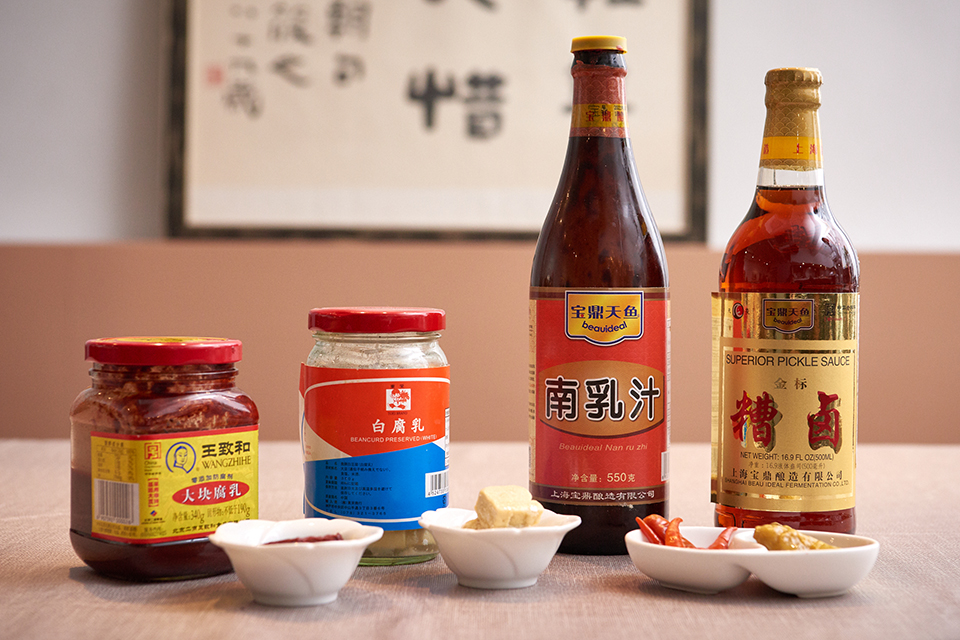

Chinese cuisine, far from being monolithic, displays remarkable regional variety in ingredients and flavors. It’s classified into four major types: Sichuan cuisine, Shandong (Beijing) cuisine, Cantonese cuisine, and Jiangsu (Shanghai) cuisine.
Xiao Wei is an expert on Chinese cuisine who knows the food cultures of that vast country inside out. With roots in Shanghai and the Xinjiang Uygur Autonomous Region, she’s now based in Japan. Here she tells us about the connection between China’s food culture and fermentation. She also describes one of the country’s signature fermented foods: fermented bean curd.
“Many of the diners who visit my restaurant and students who take my cooking classes are passionate devotees of Chinese cuisine. And the interviews the media asks me to do are often targeted at diehard Chinese food enthusiasts. I’m something of a cooking nerd myself, so I guess birds of a feather flock together.”
Xiao Wei confesses to be a cooking nerd with a mischievous smile. She has her culinary roots in the food cultures of two different regions — Shanghai and the Xinjiang Uygur Autonomous Region — and her grandmother’s home cooking.
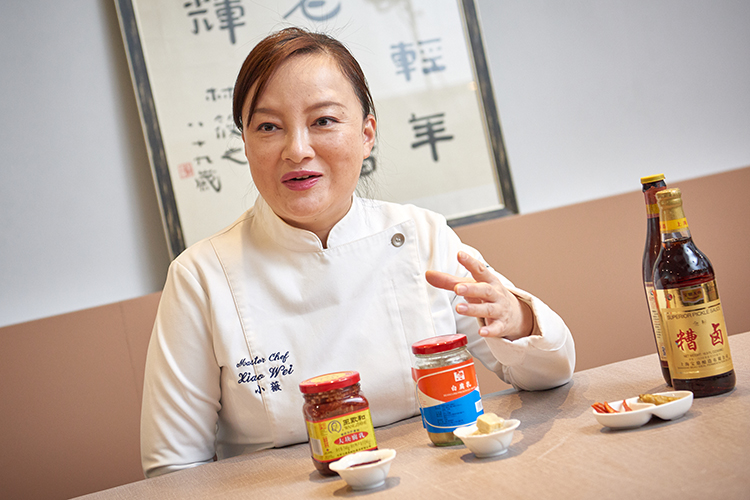
Xiao Wei was born to parents who had moved from Shanghai to the Uyghur region during the Cultural Revolution. At six months old, she was for various reasons left in the care of her grandmother in Shanghai.
“Food wasn’t readily available in Shanghai back then, and we didn’t have a fridge. Pork was therefore a valuable commodity, and we treasured it. We’d preserve it by marinating it in soy sauce or pickling it in salt. We even preserved Chinese mustard by pickling and drying it to make what’s called meigan cai. I learned to treasure food from my grandmother, because we weren’t well off when I was little. I learned the art of making it last.”
Foods that keep well after being fermented and aged possess a more complex flavor profile thanks to the amino acids produced by the breakdown of proteins.
“My grandmother would make me fried rice using fatty pork belly meat marinated in soy sauce, which enhanced the umami. It was incredibly good. It’s a taste I still can’t forget.”
Xiao Wei joined her parents in the Uyghur region when she started attending primary school. There she was exposed to a culinary culture utterly different from that of Shanghai.
“Pork is hardly eaten at all because of the region’s Islamic culture. Meat is usually eaten in the form of lamb or chicken. The main sources of starch are foods made with wheat flour like noodles, baozi, and naan, as opposed to rice in Shanghai. Above all, the Uyghurs have a culture of spices.”
Fermentation plays a key role in Shanghai cuisine, whereas spices are central to Uyghur cuisine. Xiao Wei’s exposure to a wide range of foods as a child is perhaps what underpins her impressive knowledge of her vast country’s many culinary cultures.
Xiao Wei arrived in Japan in 1995. She started out as an announcer and Chinese instructor, then began teaching Chinese cuisine. Even after becoming a much-sought-after food expert in Japan, she worked on improving her culinary skills in China. There she learned cooking techniques from some of the country’s top chefs. She studied dim sum, for example, at Lu Bo Lang, a veritable Shanghai institution patronized by prominent figures from around the world. She even traveled back and forth to Taiwan out of a desire to familiarize herself with Taiwanese cuisine, which she knew little about.
“The most enthusiastic students in my cooking class would give me homework. They’d say, for instance, ‘Are you familiar with Taiwanese pepper buns? What about beef noodles? Why don’t you tell us how to make them sometime?’ I was really curious about Taiwanese food myself, so I’d head to Taiwan to investigate.”
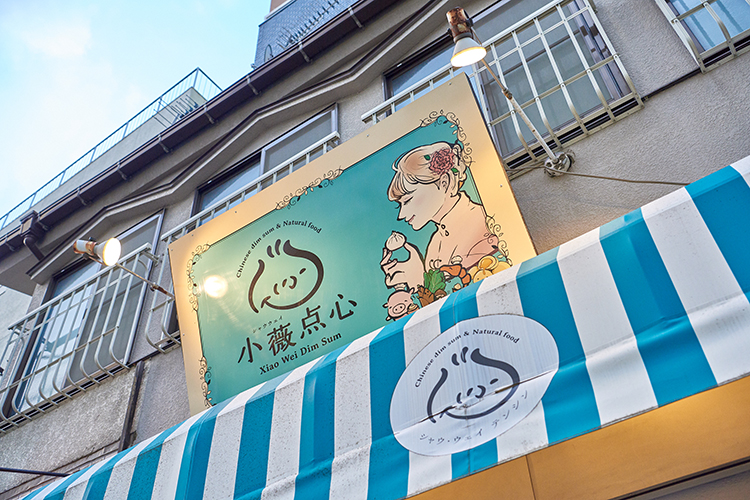
Xiao Wei’s restaurant Xiao Wei Dim Sum serves authentic Chinese dim sum without additives.
Being a student of food culture in general, Xiao Wei isn’t just interested in Taiwanese recipes. She also observes how Taiwanese cuisine differs from its Chinese counterpart.
“Taiwanese pepper buns, which consist of a meat filling in Chinese flaky pastry, resemble the meat mooncakes eaten in Shanghai, only they’re baked in a tandoor oven like those used in the Uyghur region. That fascinated me.
“Taiwanese beef noodles, unlike the Lanzhou beef noodles well known in Japan, are made with doubanjiang bean paste in the soup. What’s more, the bean paste used is Taiwanese-style bean paste, which is completely different from the spicy Sichuan variety: it contains no chili peppers.”
Xiao Wei loves making her own fermented foods. She has Chinese hams she’s cured herself hanging in her wine cellar.
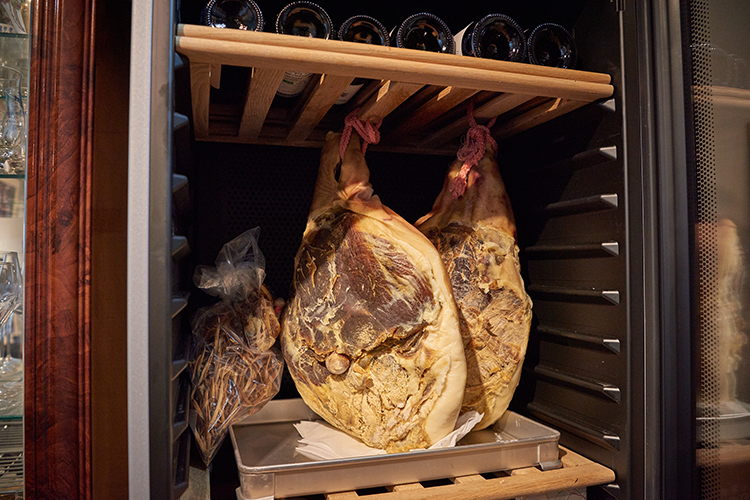
Xiao Wei keeps her Chinese hams in a temperature-controlled wine cellar. Those in the foreground are still aging.
“I used Kagoshima Berkshire pork for this ham. Pork leg with the skin still on is hard to get a hold of in Japan, so I bought an entire half hog myself and made the ham using the same technique as used for Jinhua ham, a premium Chinese ham. It’s important to keep the humidity and temperature constant, so I put them in the wine cellar.”
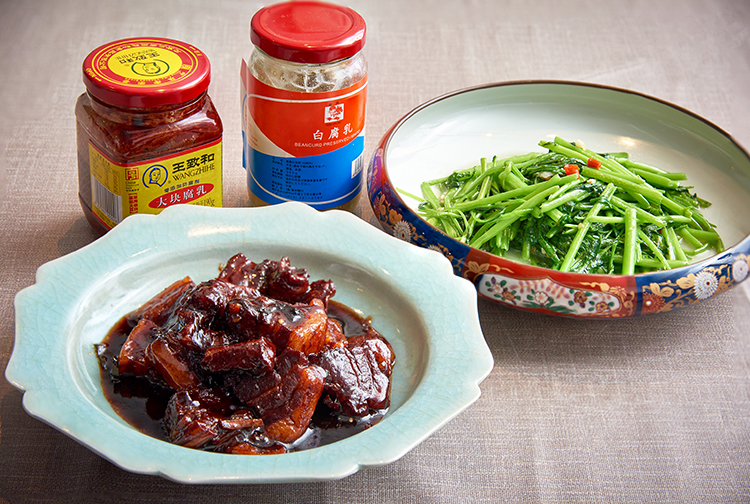
Xiao Wei, a self-confessed cooking nerd and fermentation enthusiast, prepared several dishes made with fermented bean curd for this feature. Fermented bean curd, or furu, is the quintessential Chinese food. It’s made by inoculating tofu with the Chinese equivalent of Japanese koji mold, soaking it in various types of brine, and letting it age.
“Fermented bean curd comes in many different types all over China. The two best-known are white fermented bean curd, the commonest variety, and red fermented bean curd, also known as nanru (literally “southern milk”), which is made using red yeast. Fermented bean curd has many different uses. It’s used for flavoring rice porridge and added to sauces. It’s also used as a seasoning in stir-fries and stews. The flavor of fermented bean curd varies from region to region. I guess that’s because different regions have different microbes depending on their climate and geography, so methods of fermentation differ. The Uyghur region is too arid to make fermented bean curd.”
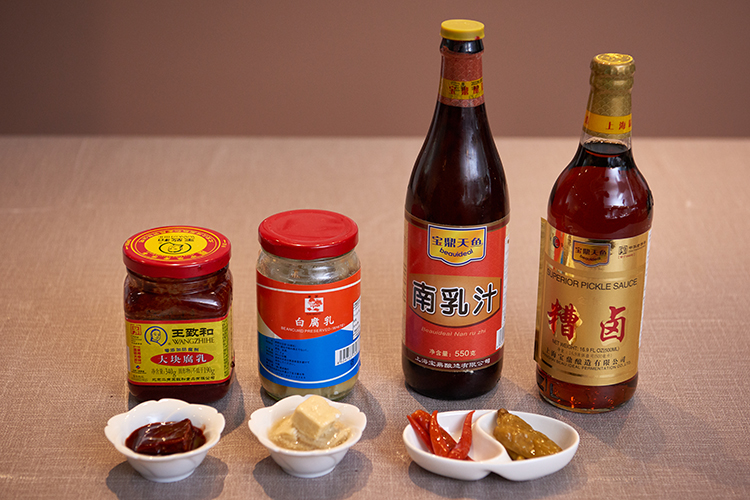
Red fermented bean curd pork (nan ru rou) is a Cantonese dish consisting of stewed chunks of pork with red fermented bean curd. It’s made by stewing pork belly in fermented bean curd, dark soy sauce, rock sugar, and Shaoxing wine. It doesn’t require spices like star anise. The sauce is thickened at the end by boiling it down, instead of using the likes of potato starch to do the job.
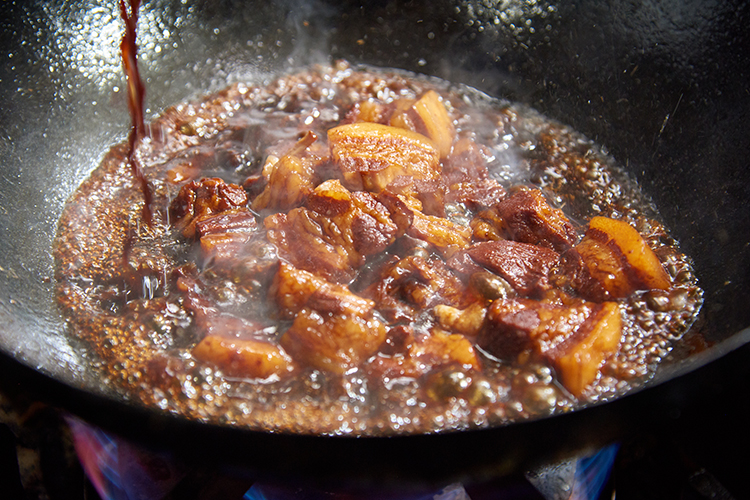
The pork is so tender, it practically melts in your mouth. Coupled with the rich flavor of red fermented bean curd, it stimulates your appetite for rice — and your desire for a drink to wash it down.
“It tastes delicious with Japanese rice, but it goes particularly well with jasmine rice. This dish is sinfully good: you’ll find yourself downing bowl after bowl of rice [laughs]. The secret to making it right is not to put too much soy sauce and sugar in. Calculate backwards from the boiling-down stage at the end. Remember, the flavor of the red fermented bean curd itself should have the starring role.”
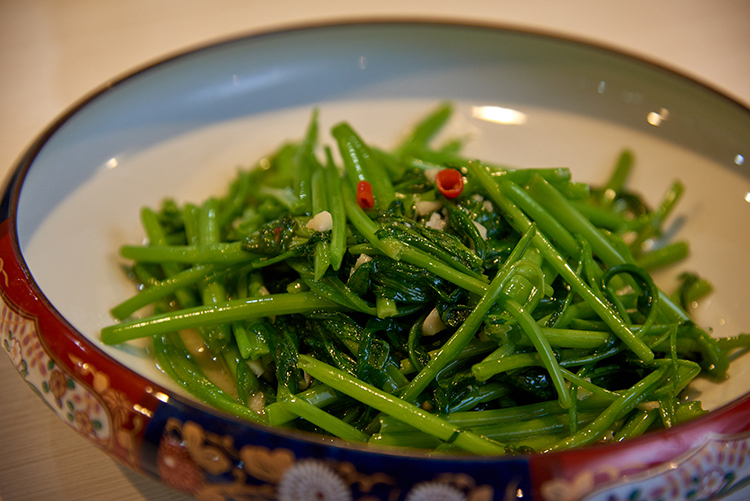
Pictured here is another Cantonese dish, stir-fried water spinach made with white fermented bean curd. The only other ingredients are minced garlic and paolajiao or fermented chili pepper. The fermented bean curd supplies the saltiness, so no salt is used. Give everything a quick stir-fry and enjoy!
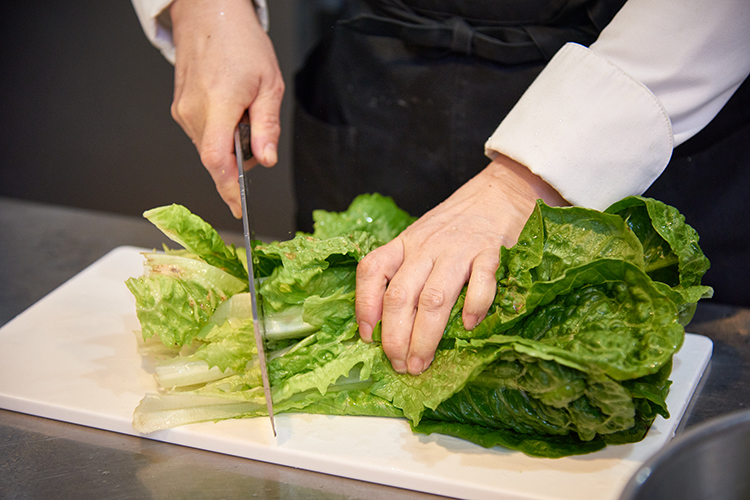
“Fermented bean curd also tastes excellent stir-fried with romaine lettuce, so why not have a go at it? You’re supposed to use Chinese stem lettuce or Taiwanese A-choy, but the closest thing easily available in Japan is romaine lettuce. No paolajiao is used. Note also that in Cantonese cuisine, peanut oil is used for stir-frying.”
The umami flavor of fermented bean curd transforms a humble plate of stir-fried vegetables into a rich taste experience. The water spinach packs a lively punch of sourness and spice from the paolajiao.
Xiao Wei is currently planning a large cooking studio complete with accommodation facilities.
“I want it to be a place that hosts culinary retreats offering classes in making dim sum, which requires intensive training. I also hope to be able to hold gourmet events there. We even plan to build an oven in the garden large enough to roast a sheep or hog whole.”
Xiao Wei certainly keeps herself busy. Besides running a restaurant and giving cooking classes, she also appears on TV, in magazines, and all over the media. Now she’s planning a new endeavor to share the wonders of Chinese cuisine. It’ll be worth watching what she gets up to next.
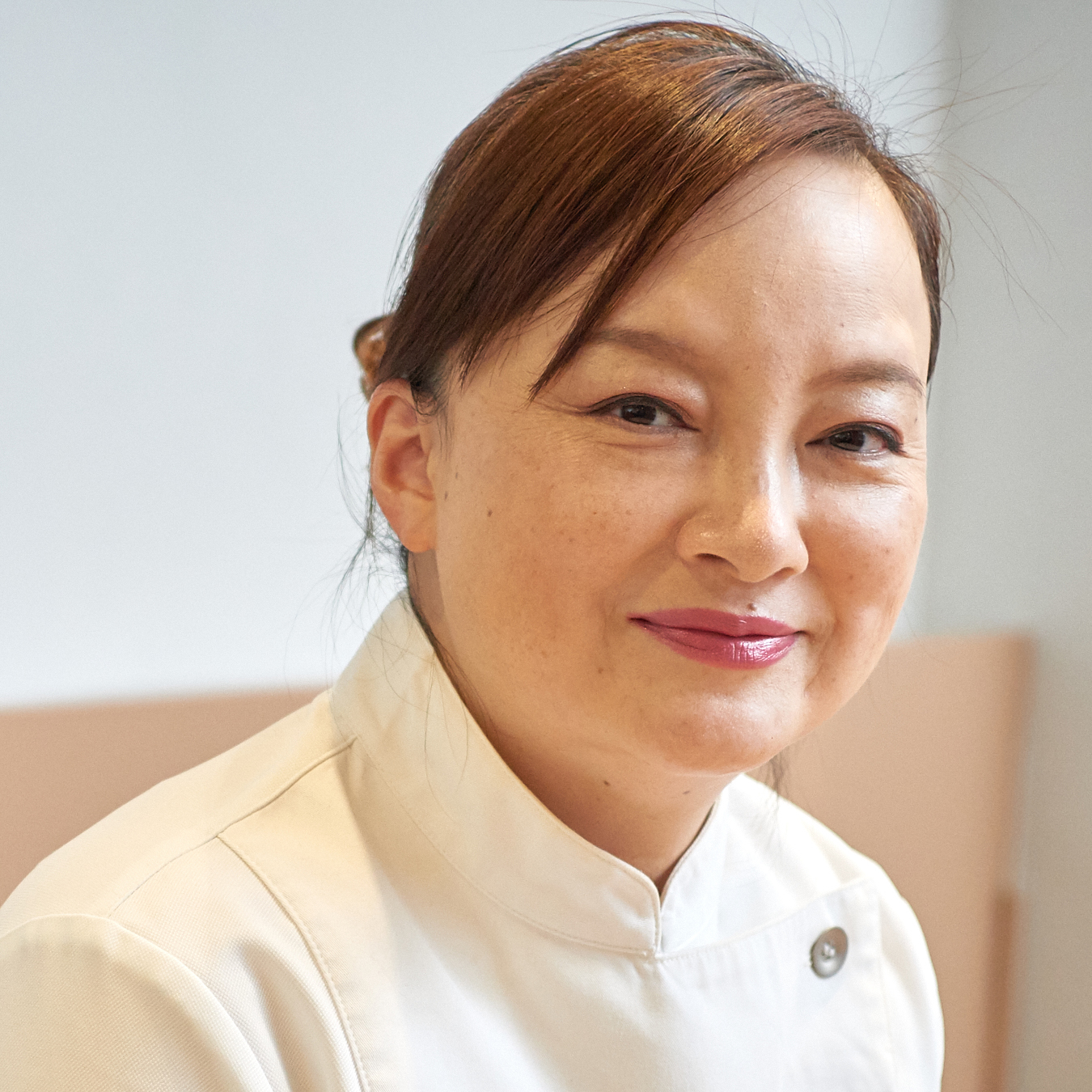
Born to a botanist father and an opera-singer mother, Xiao Wei spent her earliest years in Shanghai, then grew up in the Xinjiang Uygur Autonomous Region until the age of eighteen. After coming to Japan in 1995, she achieved popularity with her Chinese cooking classes, a spinoff from a language learning program. She then embarked on a culinary career. Having previously been owner and chef of the modern Chinese restaurant Rose Shanghai, she currently curates Xiao Wei Dim Sum and runs her own cooking school, Happy Chinese Home Cooking. Her books include Xiao Wei’s Beloved Shanghai Cuisine (published by Asahi Shimbun Publications) and Tingling Hot Paste Recipes Like Nothing You’ve Ever Tasted — Or Ever Will Again (published by EI Publishing).
Xiao Wei’s Happy Chinese Home Cooking Studio(in Japanese only)